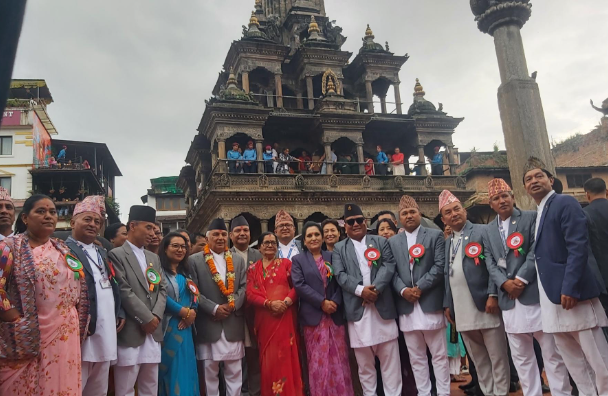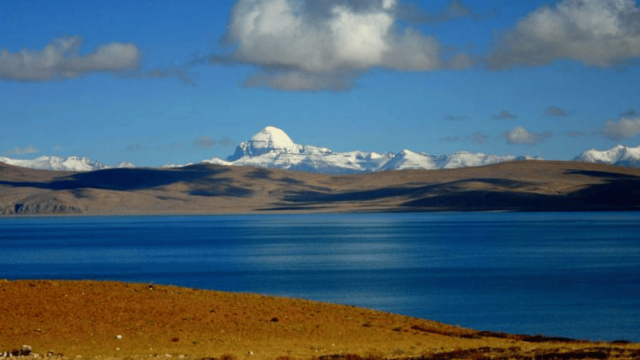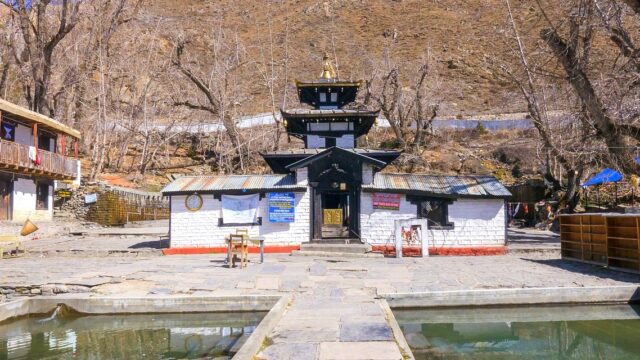The festival of Shree Krishna Janmashtami, celebrated annually on the eighth day of the dark fortnight of Bhadra, was observed with devotion and reverence by Vedic Sanatan Dharma followers across Nepal today. Devotees across the country engaged in worship and rituals dedicated to Lord Shree Krishna.
From early morning, Krishna temples nationwide were crowded with devotees. Known as the proponent of the paths of knowledge (Gyan Yoga), action (Karma Yoga), and devotion (Bhakti Yoga), Lord Shree Krishna is believed to have been born in the Dwapar Yuga on the eighth day of the dark fortnight of Bhadra, during midnight. This day is thus celebrated as Shree Krishna Janmashtami, and the night is revered as “Moharatri.” On this occasion, devotees across the country engage in worship, discourses, and Bhajan Kirtan in Krishna temples. It is also customary for men and women to observe fasts and stay awake all night in devotion.
According to ancient beliefs, Lord Shree Krishna, the eighth incarnation of Lord Vishnu, was born to Vasudeva and Devaki to protect humanity from injustice, oppression, and demonic tendencies. He spent his life advocating for truth and inspiring humanity to follow righteous deeds.
A significant fair was held at the famous Krishna Temple in Mangalbazaar, Patan, on Janmashtami. This temple has been a focal point for devotees since ancient times. Similarly, a large number of devotees gathered at the Navatan Dham in Gothatar, located in Ward No. 8 of Kageshwari Manohara Municipality, northeast of the capital.
Devotees also flocked to the Krishna Temple located within the premises of the International Society for Krishna Consciousness (ISKCON) office in Budhanilkantha, northern Kathmandu. Various religious organizations in Kathmandu also marked the occasion by organizing processions and chariot parades featuring depictions of Lord Krishna. These processions and chariot parades are traditionally held on the ninth day of the dark fortnight of Bhadra, following Janmashtami, to celebrate the joy of Lord Krishna’s midnight birth.
The “Shrimad Bhagavad Gita,” a sacred text believed to have been spoken by Lord Krishna himself during his discourse to Arjuna in the Kurukshetra war, is regarded as one of the most translated texts globally. Often referred to simply as the “Gita,” it holds a prominent place in religious literature.
Scriptures and ancient texts, including the Mahabharata, recount the miraculous deeds of Shree Krishna from his childhood, such as the slaying of demons like Putana, Kansa, Jarasandha, and Shishupala. The Gita also mentions that Lord Krishna promised to incarnate in every age to protect the righteous and to destroy those who side with falsehood.
The tradition of dressing children as Shree Krishna is becoming increasingly popular in the Nepali community, with schools also celebrating the cultural festival by adorning children as Shree Krishna and Radha. Devotees who fasted throughout the day welcomed Lord Shree Krishna by staying awake all night. To mark this occasion, the government also declared a public holiday across the country.






